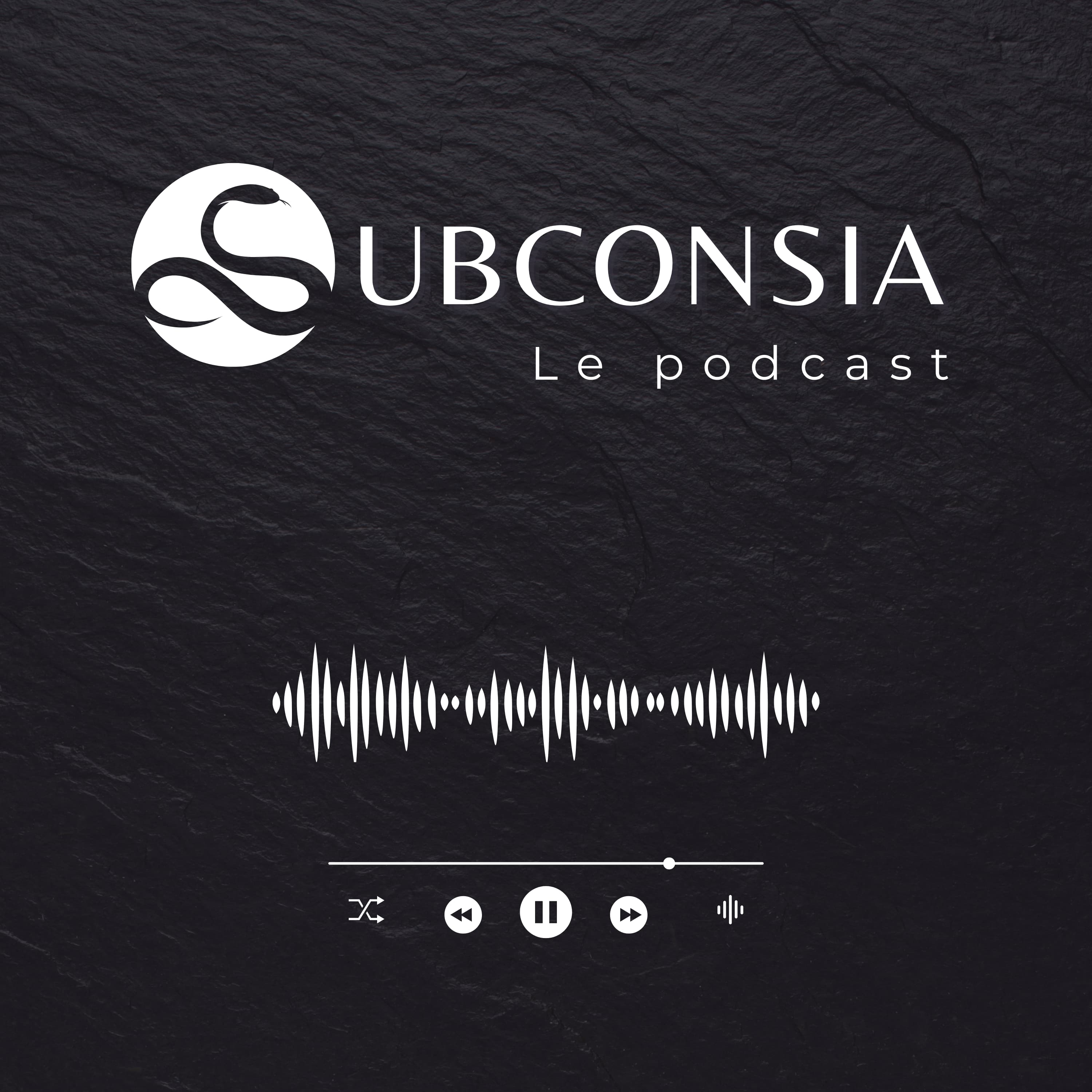Published May 10, 2025
We imagine ourselves in control of our decisions and behaviors. Yet neuroscience research reveals a very different reality: behind most of our seemingly "conscious" choices lies the considerable influence of our subconscious. This complex neurological mechanism determines much of our daily behaviors, emotional reactions, and even important decisions.
Recent scientific advances now allow us to better understand this phenomenon and, more importantly, learn to collaborate with our subconscious to achieve our goals rather than unknowingly suffer its influence.
Free Will: The Well-Crafted Illusion
Our subconscious, a true invisible conductor, governs our daily lives with remarkable precision. This well-oiled machine operates constantly without our awareness, subtly influencing every gesture, every thought. An in-depth study by Duke University reveals an astonishing finding: nearly 40% of our daily actions result not from conscious choices but from automated patterns deeply embedded in our nervous system.(1) This reflex that makes us reach for our phone upon waking isn't just a simple habit but reflects a genuine neural pathway, etched unknowingly into our most fundamental brain circuits.
Even more troubling, our past traumas, even those we believe we've forgotten, remain archived like dormant files in the depths of our psyche. As research from Harvard Medical School demonstrates, a simple stimulus (a familiar smell, a particular word) can instantly reactivate these buried emotional programs, triggering anxiety reactions whose precise origin we don't always understand.(2) This emotional memory, nestled in the limbic structures of our brain, continues to exert its influence long after the triggering events have been consciously forgotten.
Even more revealing about our supposed free will, fascinating work published in Nature Neuroscience by Soon and colleagues in 2008 revealed, through functional MRI, an astounding phenomenon: up to 10 seconds before we're aware of making a decision, our brain has already initiated the corresponding neural process.(3) In other words, our choices sometimes seem decided before we're even aware of them, fundamentally challenging our traditional conception of free will.
A simple test allows observing this phenomenon daily: when you're walking and a friend suddenly asks you to stop, your body begins to stop but typically continues for two or three more steps. This delay precisely reveals the time needed for your subconscious to interrupt the already engaged "walking program," perfectly illustrating the gap between conscious intention and automatic processes.
Your Dreams: An Organized Hack
While Freud may have been wrong about some aspects of psychoanalysis, his intuitions about the importance of dreams as windows to the unconscious find surprising validation in modern neuroscience. Far from being mere nocturnal ramblings, our dreams represent genuine "data leaks" from our subconscious, revealing fundamental mental processes occurring during sleep.
National Institutes of Health (NIH) research has shown that while we sleep, our brain performs genuine emotional cleansing, comparable to maintenance of our psychic "hard drive." This essential process allows integrating daily experiences and regulating our emotional balance. Simultaneously, activity in the amygdala, this brain structure specialized in processing emotions—particularly fear—intensifies during certain sleep phases, allowing our brain to simulate and test stress scenarios in a safe environment.(4)
Even more fascinating, the hippocampus, the true memory processing center, works actively during sleep to sort, consolidate, and sometimes eliminate memories deemed non-essential. This nocturnal activity, invisible but crucial, explains why a good night's sleep significantly improves learning and memorization.
A simple but scientifically validated method by the Journal of Sleep Research allows exploiting this phenomenon: by keeping a dream journal handy and noting three keywords describing your dreams each morning, you'll see the deep emotional knots animating your psyche emerge in just seven days. This practice offers privileged access to often unconscious concerns influencing your daily behaviors. (5)
Three Scientific Tools to Reprogram Your Mind
1. Positive Emotional Reviviscence
Neuropsychology research has clearly established that our brain encodes and memorizes experiences primarily through their emotional charge. This fundamental discovery opens the way to a particularly effective technique for reprogramming our subconscious.
Rather than mechanically repeating positive affirmations like "I am confident" (formulas that often clash with our critical mind's skepticism), make a habit of regularly immersing yourself in authentic memories where you overcame obstacles, even minor ones. Close your eyes for a few minutes and consciously relive these moments of personal victory, focusing particularly on the physical and emotional sensations that accompanied them: the pride that warmed your chest, the relief that relaxed your shoulders, the spark of joy that brightened your day.
This practice isn't mere positive thinking but concretely activates the neurobiological circuits of emotional memory. Over time and repetition, it strengthens synaptic connections associated with self-confidence and resilience, building a sense of personal efficacy deeply rooted in your nervous system.
2. Three-Minute Quantified Meditation
Meditation, long viewed skeptically by the Western scientific community, now enjoys growing recognition thanks to rigorous studies demonstrating its measurable effects on the brain. A particularly accessible technique involves counting your breaths backward from 30 to 0 for just three daily minutes.
This simple practice produces remarkably concrete benefits. A study published in JAMA Psychiatry showed that such regular practice can reduce anxiety symptoms by up to 40% in participants. (6) Even more impressive, neuroimaging research reported by the Harvard Gazette revealed a measurable increase in gray matter in brain regions associated with concentration and emotional regulation after just eight weeks of regular practice. (7)
What makes this approach particularly relevant for subconscious reprogramming is its ability to create an altered state of consciousness where barriers between conscious and subconscious become more permeable, facilitating the integration of new perspectives and reconfiguration of deeply rooted mental patterns.
3. Guided Sensory Self-Hypnosis
Self-hypnosis represents a third particularly promising avenue for dialoguing with your subconscious. This technique, whose foundations are recognized in scientific psychology literature, allows access to an altered state of consciousness favorable to profound inner changes.
To practice this method, settle comfortably in a calm environment free of distractions. Ideally use neutral, constant background noise (like soothing rain or ocean breathing sounds) that will serve as an attentional anchor and facilitate hypnotic induction. These sound stimuli, available on many apps or video platforms, help naturally synchronize your brain activity toward slower, more receptive frequencies.
Close your eyes and begin by establishing slow, deep breathing, then gradually introduce a simple but emotionally resonant phrase like "I let go," repeated mentally in sync with your breathing rhythm. After about ten minutes of this practice, your mind enters a state of heightened receptivity, particularly conducive to integrating new associations and restructuring limiting beliefs. Medical News Today reports several studies confirming this approach's effectiveness for modifying deeply rooted thought patterns and promoting lasting behavioral changes. (8)
The "Cheat Code" to Control Your Subconscious
Contemporary neuroscience reveals that our subconscious operates according to specific principles that can be strategically exploited. Understanding these fundamental mechanisms equates to discovering the "source code" of our mental programming.
Your subconscious shows particular affinity for three types of stimuli: first, repetition loops, which largely explain our propensity for social media addiction and other compulsive behaviors. These intermittent reward systems powerfully activate our brain's dopaminergic circuits, creating behavioral patterns particularly difficult to consciously interrupt.
Second, vivid mental images exert considerably more influence than abstract verbal constructions. Our brain architecture, forged by millions of years of evolution in an environment where vision was crucial for survival, processes visual information with remarkable depth and priority. Intense visualization mobilizes neural networks similar to those activated during the corresponding real experience, thus creating particularly durable mental imprints.
Finally, immediate rewards trigger dopamine release, this neurotransmitter often called the "pleasure molecule," which instantly reinforces associated behaviors. This neurobiological preference for immediate gratification largely explains the difficulties we experience maintaining long-term beneficial behaviors lacking immediate satisfaction.
A concrete example of applying these principles concerns procrastination. Rather than repeating the abstract and poorly motivating formula "I must work," intensely visualize the satisfaction you'll feel after accomplishing your task, along with a specific, pleasant reward that will immediately follow this achievement: whether it's a mindfully savored coffee, a revitalizing walk, or well-deserved relaxation time. This approach, validated by James Clear's work in Atomic Habits, directly exploits your brain's natural motivation mechanisms.
Final Word: Understanding the Rules of the Game to Free Yourself
Your subconscious isn't your enemy. It's more like an extremely powerful supercomputer but programmed with sometimes obsolete algorithms. It constantly acts in what it perceives as your interest, making you instinctively avoid situations perceived as risky, even when these risks could precisely allow you to grow and evolve. Similarly, it tends to repeat familiar behavioral and emotional patterns, even when these ultimately prove destructive to your balance and fulfillment.
The good news emerges from neuroplasticity research: you can effectively "reprogram" this system using its own operating mechanisms. Strategic repetitions, targeted emotional anchoring, and using personally meaningful symbols constitute the keys to this transformation. Studies published by the American Psychological Association confirm that 85% of lasting behavioral changes occur precisely through these subconscious reconfiguration mechanisms rather than by conscious willpower alone.(9)
To put these discoveries into practice, start modestly but concretely: choose just one specific habit you want to change this week. Meticulously apply one of the methods described in this article, observing the progressive results with curiosity. The transformation may seem subtle initially, but its cumulative nature guarantees profound, lasting changes over time. Your future self will thank you for this enlightened approach of collaborating with your subconscious rather than fighting its fundamental mechanisms.
Support independent research
Each contribution helps maintain this ad-free project. (Direct alternative if coffee button doesn't work)
By Dounia Boukrim


